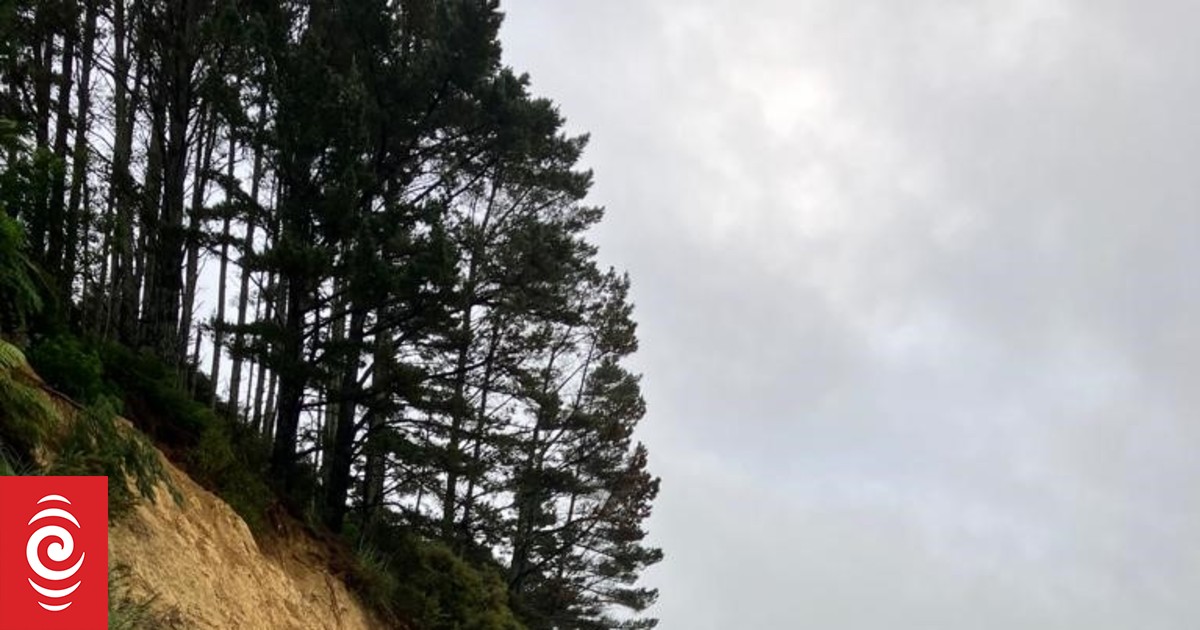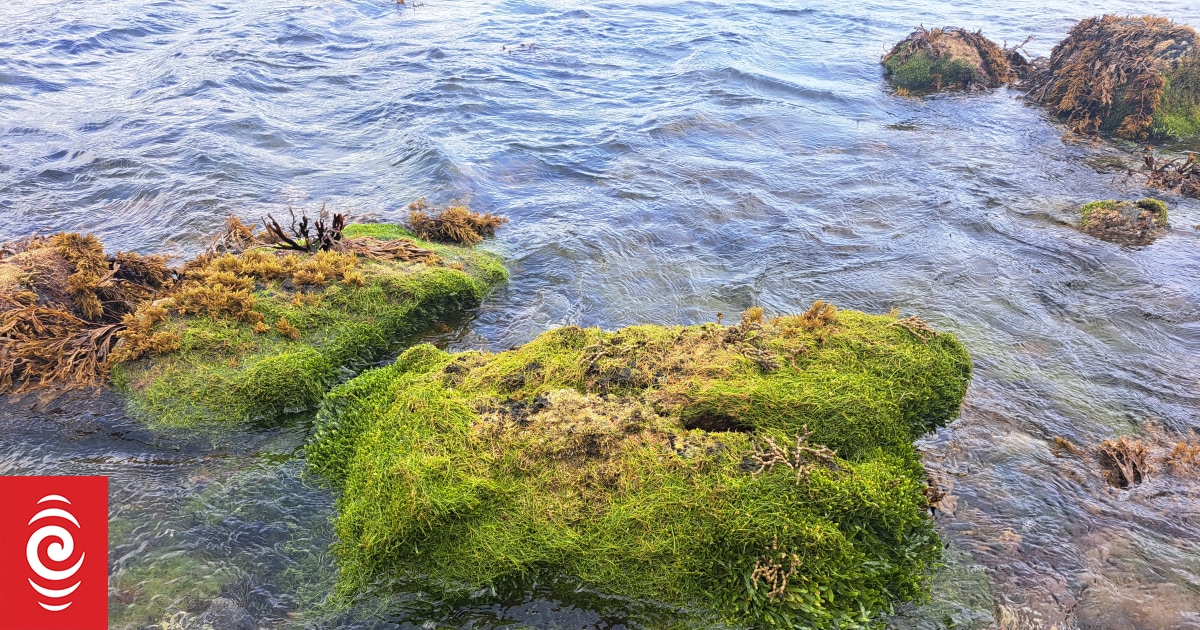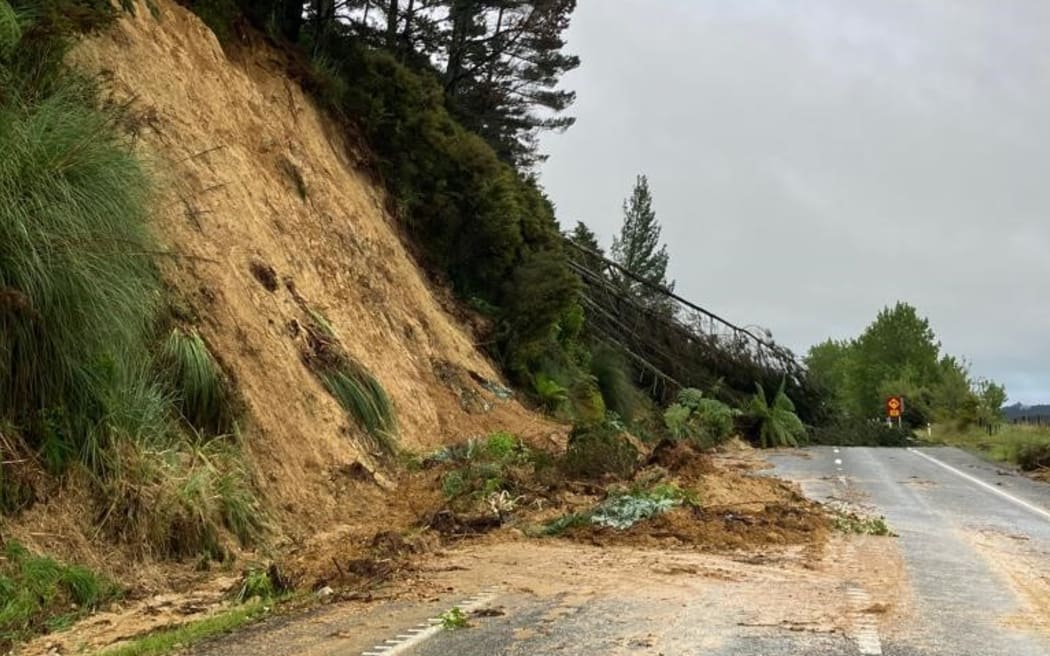
A slip in the Brynderwyns.
Photo: Supplied / Waka Kotahi
Bringing New Zealand’s State Highway 1 fully back to life in the wake of Cyclone Gabrielle will take years, Prime Minister Chris Hipkins told Northland local government leaders in Whangārei on Friday.
“We are talking years. If we are wanting to build a new highway, that’s years,” Hipkins said.
His comments come as SH1 over Northland’s Brynderwyns heads is into its third week of closure after several huge Cyclone Gabrielle slips. These slips scuppered a brief opening of this essential stretch of SH1 immediately prior to the cyclone, after it had also been similarly shut due to previous slips for some time because of earlier bad weather.

The Brynderwyns closure comes as further north, closure of SH1 over the Mangamukas, near Kaitāia, is now in its seventh month as the result of huge August rains.
Hipkins said SH1 repairs would not happen overnight, and if it came to instead building a new route for parts of the highway, that would take years.
The prime minister was visiting Northland to check out Cyclone Gabrielle damage, visiting the Northland Civil Defence emergency coordination centre along with meeting the region’s local government mayors and chairs, hard-hit Kaipara and a marae-based Cyclone Gabrielle food distribution centre in Whangārei.
Northland local government leaders on Friday gave Hipkins the message loud and clear that the government needed to get the region’s SH1 sorted.
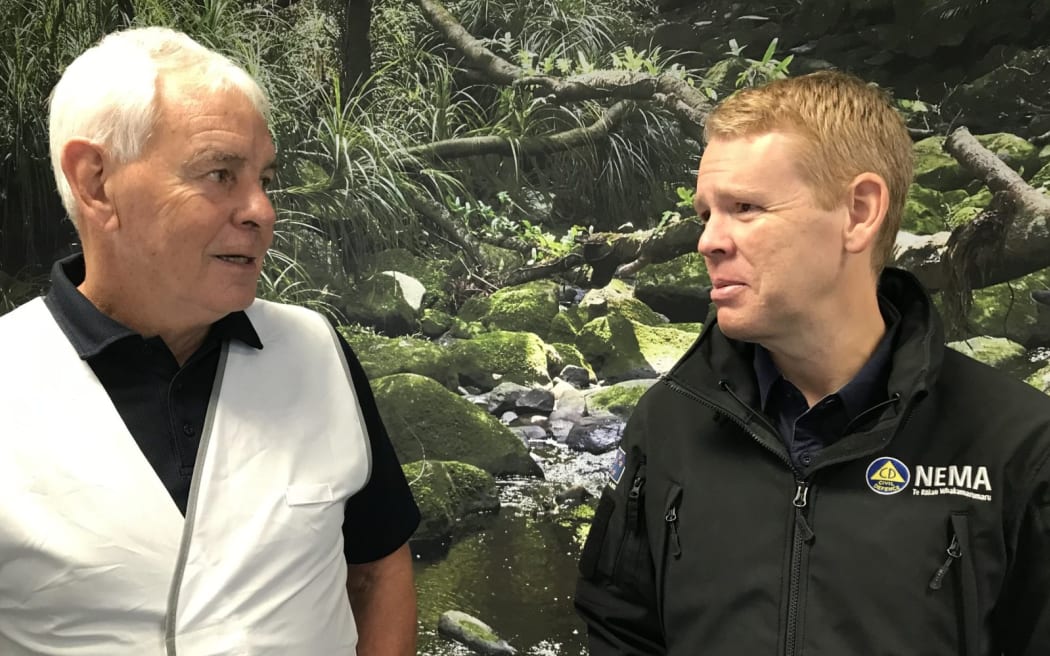
Northland Civil Defence Group controller Graeme MacDonald (left) and Prime Minister Chris Hipkins at Northland Regional Council in Whangārei
Photo: Susan Botting / Local Democracy Reporter Northland
Whangārei Mayor Vince Cocurullo said the SH1 Brynderwyn failure was putting pressure on the diversions along local ratepayer-funded district roads now being used by thousands of vehicles each week.
Cocurullo said the government should be stumping up the $118.8 million needed to repair these alternate routes and get them up to scratch so they offered future sustainability. This was for the under-pressure Cove Road and Oakleigh-Paparoa Road. It was also to bring a third option into the mix – Waipū Gorge Road, currently closed due to cyclone slips.
Cove Road’s 37km would cost $47m to bring up to speed, Oakleigh-Paparoa Road 40km $52.6m and Waipū Gorge Road’s 12.5km $18.8m.
Cocurullo said every Auckland to Whangārei truck journey over the Oakleigh-Paparoa Road diversion cost truckers an extra $400.
‘Not a holiday highway’
Kaipara Mayor Craig Jepson said diverting people along Cove Road was sending extra traffic into Mangawhai village and Mangawhai Heads.
Jepson said Northland was trapped in the mantra of being the ‘holiday highway’ for much of its network.
“It’s not a holiday highway, it’s a vital link to feed us and fuel us,” he said.
“The whole of the North is very vulnerable. We don’t want politics, we want action,” Jepson said.
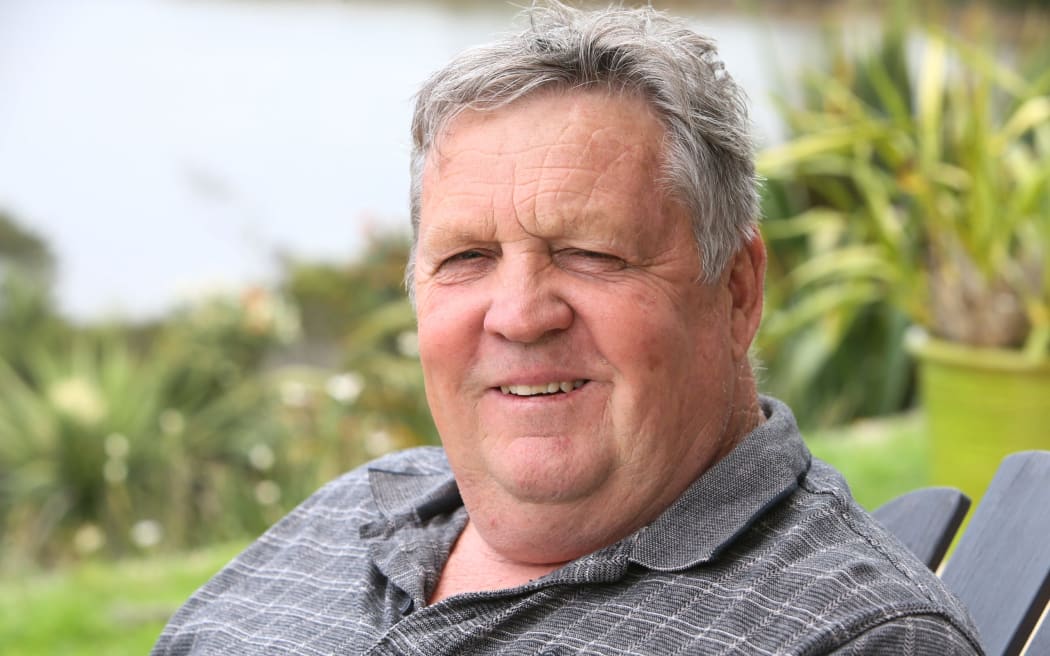
Kaipara Mayor Craig Jepson.
Photo: Northern Advocate / Tania Whyte
Northland’s SH1 needed to be sorted, even if it came to tolls being part of getting that done, on a new route.
Far North Deputy Mayor Kelly Stratford said roads were still the biggest issue in her district in the wake of Cyclone Gabrielle.
“It’s not about gold plated, it’s about meeting expected needs,” Stratford said.
Roading had been challenged, she said. Other infrastructure was majorly impacted. There were still places in the Far North without electricity, a dozen days down the track from losing power as the cyclone hit.
Northland Regional Council chair Tui Shortland said Cyclone Gabrielle had exposed deep vulnerabilities in the North.
The most impacted were those who were also most vulnerable.
Shortland said there were issues across multiple areas including for businesses, roading and marae and the impacts of multiple slips around the region.
All resilience options needed to be considered.
Long road to recovery
The prime minister said recovery would have different phases. New Zealand was just coming out of the emergency response phase getting power on, cellphone towers up and roads open.
The big conversations would be happening next, over the next few years and longer.
Newly-appointed Northland extreme weather recovery committee lead and Te Tai Tokerau MP Kelvin Davis said he would be having a Cyclone Gabrielle cloud-based video conferencing meeting with Northland local government, business leaders, iwi and others in the next couple of days.
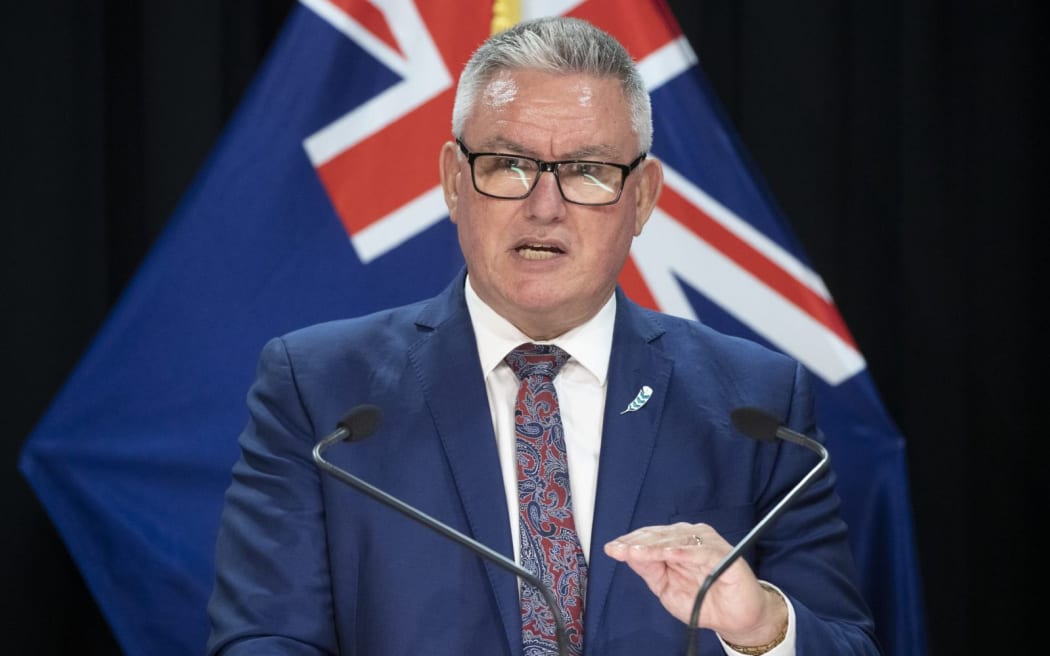
Te Tai Tokerau MP Kelvin Davis.
Photo: NZME
His focus would be Northlanders at the end of the road in places like Pouto, Mitimiti, Te Hāpua and Rāwhiti.
Davis said it made sense that if these communities had electricity, supplies, water and other necessities, everyone in between would also be resilient.
Davis told Northland leaders calling for the region’s infrastructure to be sorted that there were serious conversations to be had.
“It’s a matter of how courageous you want to be,” Davis said.
It was not just a matter of looking to the government for everything. Council rates were something to consider too when it came to funding.
Local Democracy Reporting is Public Interest Journalism funded through NZ On Air.

